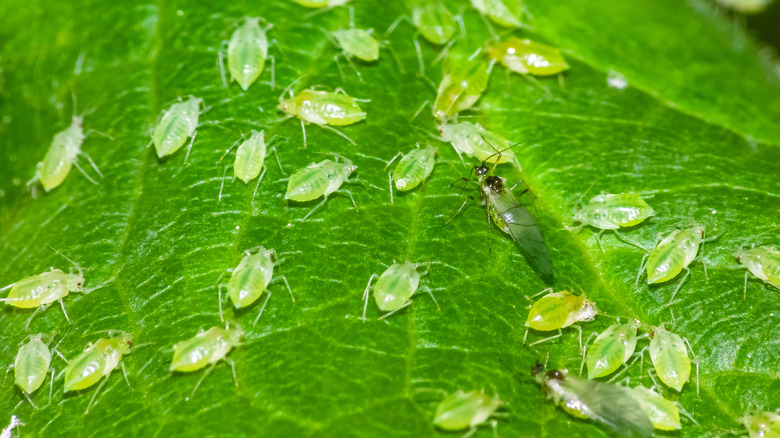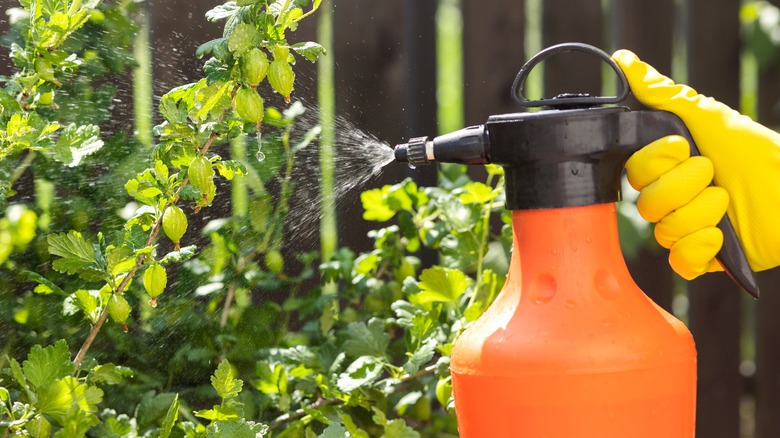Banishing Aphids In Your Garden Only Requires 2 Ingredients You Already Have
When aphids begin to infest your garden, one of the most effective and eco-friendly methods to combat them is with a simple soap and water solution. This approach works by attacking the pests directly, without harming your plants or disrupting the natural balance of your garden's ecosystem. Aphids are soft-bodied insects that feed on the sap of plants, which weakens their growth and leads to issues like wilting, yellowing, and leaf curl. Soap helps by eliminating the outer protective layer of the aphids, causing them to dehydrate and die.
To make your own homemade aphid spray, start by mixing a few tablespoons of pure liquid soap — such as castile soap — into a small bucket of water. Be careful not to use detergents or products containing degreasers or moisturizers, as these can damage plant leaves. Soap and water sprays are particularly beneficial because they target the aphids while leaving hard-bodied beneficial insects, such as ladybugs, lacewings, and pollinating bees, unharmed. These insects play an important role in maintaining the health of your garden, helping to naturally keep pest populations in check. In addition, unlike chemical pesticides, a soap solution is safe for birds and other wildlife that might frequent your yard.
While using soap to banish aphids can make a big difference, preventive methods, such as planting garlic, using cinnamon spray, or adding other pest-repelling plants can help to keep aphids at bay long-term. By combining these approaches, you can protect your plants from ongoing aphid damage and ensure a healthy, vibrant garden year-round.
Applying the soap solution effectively
Once you've mixed your soap and water solution, knowing how to apply it correctly is key to ensuring its effectiveness against aphids. Timing is crucial — apply the solution in the early morning or late afternoon when the sun is not at its peak. This prevents the mixture from drying out too quickly and also reduces the risk of sunburn on the plants. Be thorough with your application, as missing even a small patch of aphids can lead to a quick resurgence of the infestation.
Start by spraying the solution directly onto the areas where aphids are most visible. Pay special attention to the underside of the leaves, as aphids and their eggs often hide there. A light, even coating will be enough to dissolve their outer layer without overwhelming your plants. It's important to check your plants every few days and reapply the solution if necessary, especially if rain has washed it away or if you notice new aphids appearing.
Additionally, while the soap solution works on contact, it's not a one-time fix. Repeat applications may be needed, especially with heavy infestations. Monitoring your plants regularly for new aphid clusters will ensure you catch any issues before they escalate. Though the soap solution won't harm beneficial insects, try to avoid spraying it directly on them — target the aphids as much as possible. If you're using an insecticidal soap from a store, make sure to follow the product's instructions to avoid damaging your plants.

